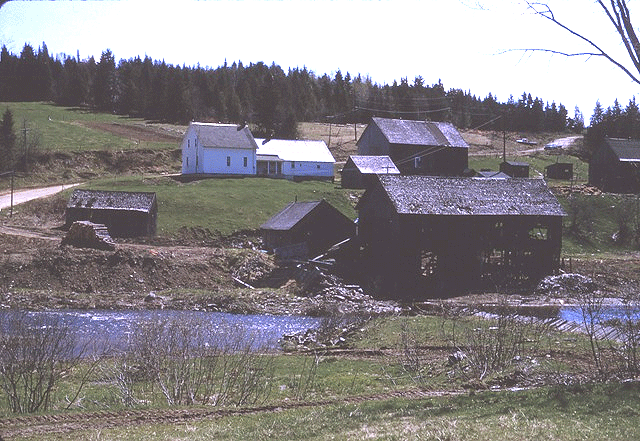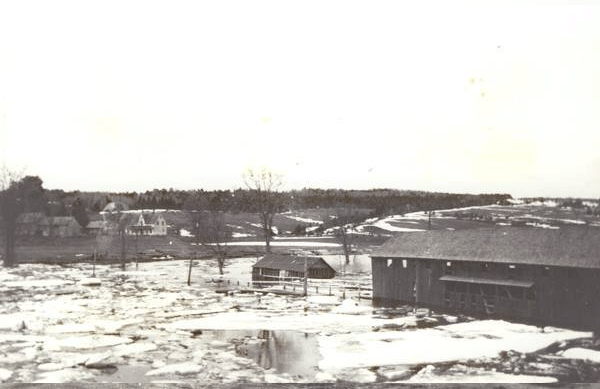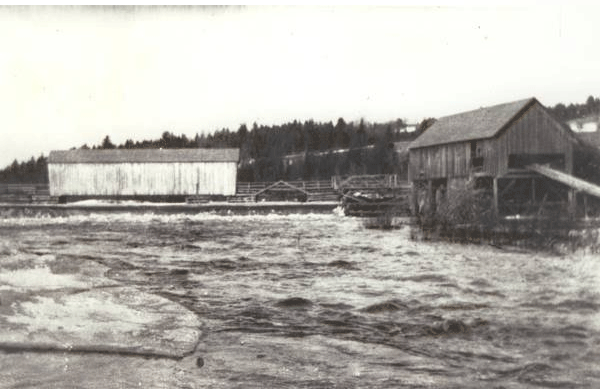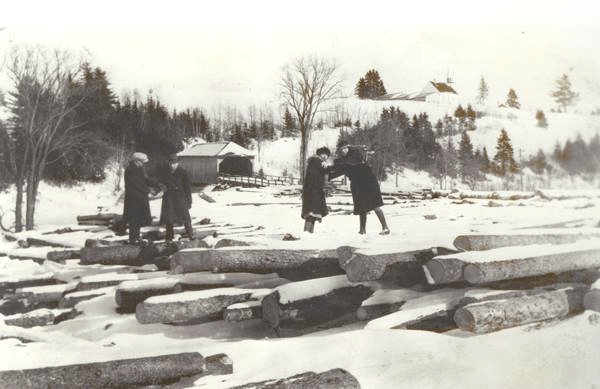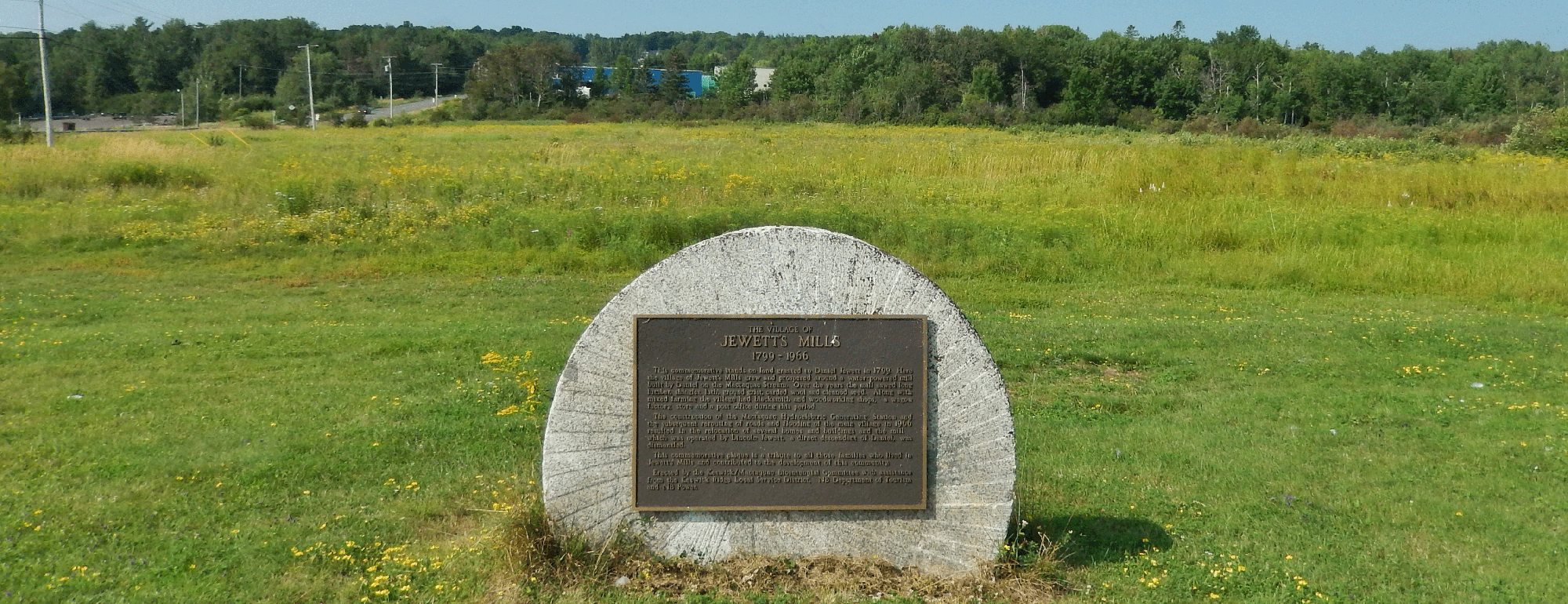
Jewett’s Mills
Jewett’s Mills was established in 1799 when Daniel Jewett received a land grant in recognition of his service as a Loyalist during the American Revolutionary War. He constructed a water-powered mill on the Mactaquac Stream, which became the heart of the village. Over the years, the mill produced a variety of goods, including lumber, shingles, grist, wool, and cleaned seed. The community grew to include blacksmith and woodworking shops, a wagon factory, a store, and a post office, becoming a thriving hub of activity in the region.
In 1966, the construction of the Mactaquac Dam necessitated the relocation of Jewett’s Mills. The village was displaced to make way for the creation of the Mactaquac Headpond, which submerged the area under approximately 87 square kilometers of water. This flooding resulted in the loss of homes, businesses, and the historic mill. The mill, operated by Lincoln Jewett, a direct descendant of Daniel, was dismantled and relocated, marking the end of an era for the community.
In response to the loss of cultural heritage, the provincial government established King’s Landing Historical Settlement to preserve and showcase several buildings that would otherwise have been submerged. This living history museum offers a glimpse into the past, featuring restored structures and artifacts from the era.
Today, the Keswick Ridge Historical Society plays a vital role in preserving the history of Jewett’s Mills and the surrounding region. Through photographs, artifacts, and oral histories, the society keeps alive the memory of a community that was forever changed by the construction of the Mactaquac Dam. Our efforts ensure that the stories of the people and places displaced by the dam continue to be remembered and honored.
For a fascinating and extensive history of Jewett’s Mills and its people, The Vanished Village, a book by Evelyn Gordon and Harry Grant, is available in our bookstore.
